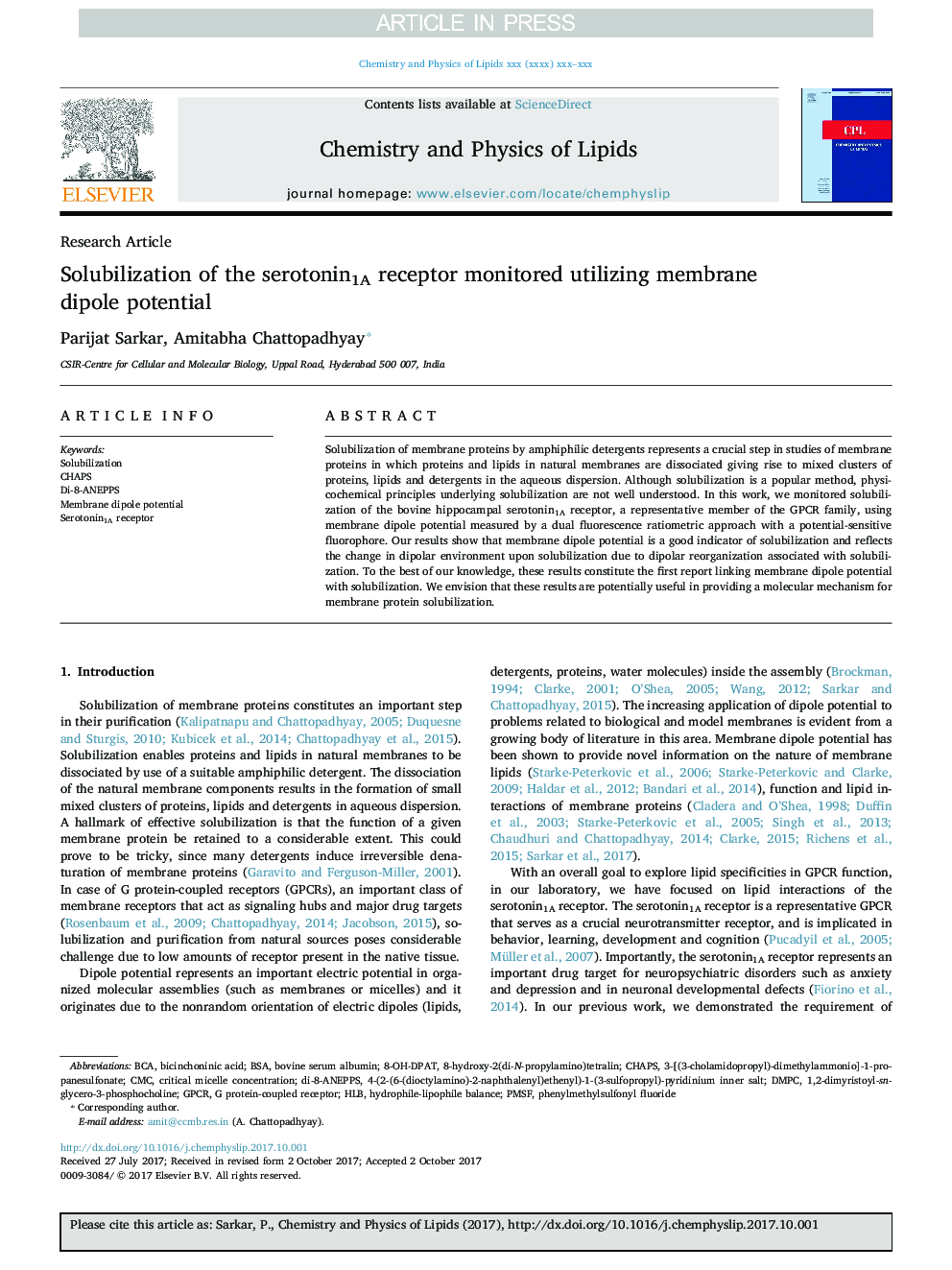| Article ID | Journal | Published Year | Pages | File Type |
|---|---|---|---|---|
| 7692215 | Chemistry and Physics of Lipids | 2017 | 7 Pages |
Abstract
Solubilization of membrane proteins by amphiphilic detergents represents a crucial step in studies of membrane proteins in which proteins and lipids in natural membranes are dissociated giving rise to mixed clusters of proteins, lipids and detergents in the aqueous dispersion. Although solubilization is a popular method, physicochemical principles underlying solubilization are not well understood. In this work, we monitored solubilization of the bovine hippocampal serotonin1A receptor, a representative member of the GPCR family, using membrane dipole potential measured by a dual fluorescence ratiometric approach with a potential-sensitive fluorophore. Our results show that membrane dipole potential is a good indicator of solubilization and reflects the change in dipolar environment upon solubilization due to dipolar reorganization associated with solubilization. To the best of our knowledge, these results constitute the first report linking membrane dipole potential with solubilization. We envision that these results are potentially useful in providing a molecular mechanism for membrane protein solubilization.
Keywords
CMCDi-8-ANEPPSHLBBCAdMPC8-hydroxy-2(di-N-propylamino)tetralinPMSF8-OH-DPATGPCR1,2-dimyristoyl-sn-glycero-3-phosphocholine3-[(3-cholamidopropyl)-dimethylammonio]-1-propanesulfonateBSAbovine serum albuminbicinchoninic acidhydrophile-lipophile balanceSolubilizationcritical micelle concentrationphenylmethylsulfonyl fluorideMembrane dipole potentialCHAPSserotonin1A receptorG protein-coupled receptor
Related Topics
Physical Sciences and Engineering
Chemistry
Chemistry (General)
Authors
Parijat Sarkar, Amitabha Chattopadhyay,
